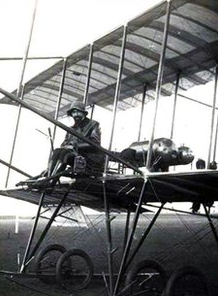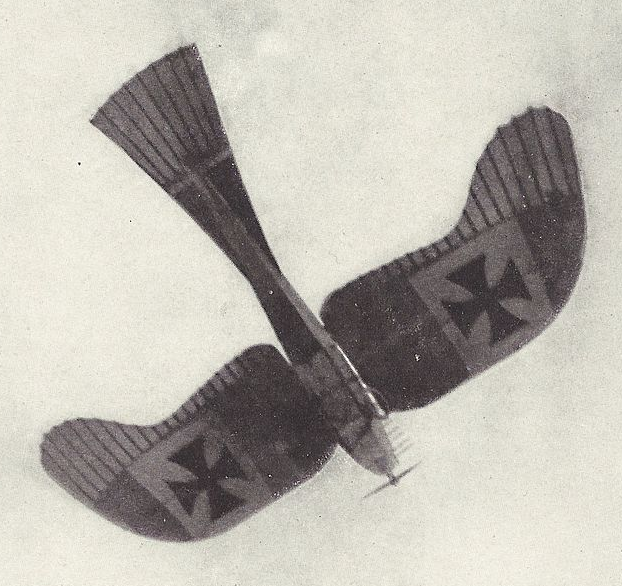In the early twentieth century, airplanes and their use for military purposes were still in their infancy.
After the Wright Brothers’ first demonstration of airplane flight, many governments around the world considered the use of airplanes (or “aeroplanes,” as they were originally called) in warfare.
These “heavier than air” machines were initially used by militaries for transportation and reconnaissance.
Related Article – Airline Transport Pilot Certificate (ATP): 4 Things You Need To Know
In the six years after the Kitty Hawk demonstration, aviation pioneers gave considerable thought to other ways of using planes in battle.
Giulio Douhet, an Italian army officer who later came to be known as the father of the modern bombing concept, speculated:
“At present we’re fully conscious of the importance of the sea. In the near future, it will be no less vital to achieve the same kind of supremacy in the air.”
First US Government Tests
The U.S. government ran tests with sandbags starting in 1910, and even experimented with firing rifle rounds at ground targets from an airplane.
Lieutenant Myron Crissy was the first person to drop live ordinance from a plane in California.
While these early American experiments had good results, these were only achieved in a controlled environment, at altitudes of 300 feet or lower.
Targets were stationary, and no enemy was firing at them.
The First Recorded Bomb Attack Dropped From an Airplane
Italian Lieutenant Giulio Gavotti decided it was time to try dropping bombs from an airplane in a real combat situation.
In November of 1911, Gavotti was involved in a conflict between Italy and the Turkish Ottoman Empire (now Libya).

After being ordered to North Africa with several aircraft on a ship, he wrote to his father about his plans for experimenting with aerial assaults:
“Today I have decided to try to throw bombs from the aeroplane. It is the first time that we will try this and if I succeed, I will be really pleased to be the first person to do it.”
The Italian army’s air assets at the time were nine early Taube sample airplanes, and a couple observation balloons.
Related Article – 12 Runway Markings and Signs Explained By An Actual Pilot
Designed by Austrian engineer Igo Etrich, the Taube (German for “dove”) was constructed of wood and covered in canvas.
The craft’s wingspan covered 45.8 square feet, and its shape rendered it almost invisible to ground observers when it flew above 1,200 feet.

Its early piston engine provided a top speed of just under 60 MPH.
Control in flight was obtained by warping and twisting the wings and tail, a method similar to the Wright Brothers’.
Gavotti’s superiors had sent two boxes of bombs with no instructions on what to do with them, but Gavotti assumed he should throw them from his airplane, so that’s what he did.
Another letter to his father revealed how he carefully put together a padded leather case for the bombs, which weighed about 1.5 kilos.
Storing three bombs in the case, he tucked another three in his own jacket pocket.
Gavotti then hopped into the Taube and flew to Ain Zara, a city east of Tripoli.
Once the oasis was in view, he held the steering wheel with one hand, and used the other to take a bomb out of the case and lay it in his lap.
He then pulled the pin with his teeth and tossed the grenade out of the cockpit, taking care not to hit the wing.
After watching the grenade disappear, he later observed a dark cloud when it hit the ground.
Then he tossed two more grenades out, with less success.
When Gavotti reported back, his general was pleased.
The press was excited to report on the story, even though the bombing likely caused few, if any, actual casualties.
Aviator Lt. Gavotti Throws Bomb on Enemy Camp, Terrorized Turks Scatter Upon Unexpected Celestial Assault was the headline carried by wire services.
Despite being an exaggeration, the headline still captivated audiences around the world.
Related Article – 14 Taxiway Markings, Signs, and Lights Explained By An Actual Pilot
Turks Response to the Bombing
Meanwhile, the Turks did their own embellishment of the story, claiming the bombs hit civilian targets, including a hospital beyond the contested area, and that the attack had resulted in a “great loss of life.”
The Italians denied this allegation. Eventually, an inquiry after the conflict found the hospital damage was caused by an artillery shell, not a grenade, and no one was hurt in the hospital attack.
Other Governments Jump Into The Action
The world’s first bomb attack ultimately made a bigger impression on the media than it did on any of its targets.
But experts around the world took the attack, successful or not, as a sign that aerial assaults held potential for future conflicts.
The governments of Great Britain, France, Germany, Russia, and even the United States sent representatives to analyze data on the raid.
Although many of them concluded the attack was not all that successful, they still learned from the information.
It turned out many of the grenades had failed to detonate, and the ones that did go off exploded mostly over uninhabited areas of desert, disturbing only sand.
Additionally, they discovered that reports of the Turks scattering in fear were also false. Instead, the Turks had tried to zero in on the Taube with machine guns, something they had been practicing on the Italian force’s slow-moving balloons.
Although they failed to shoot down Gavotti’s plane, this presented a concern for future aerial assaults.
Related Article – 5 Best Low Time Pilot Jobs With 250 Hours
While the world’s first bomb attack had little impact on the battle at hand, it marked the beginning of a new era in modern warfare.
